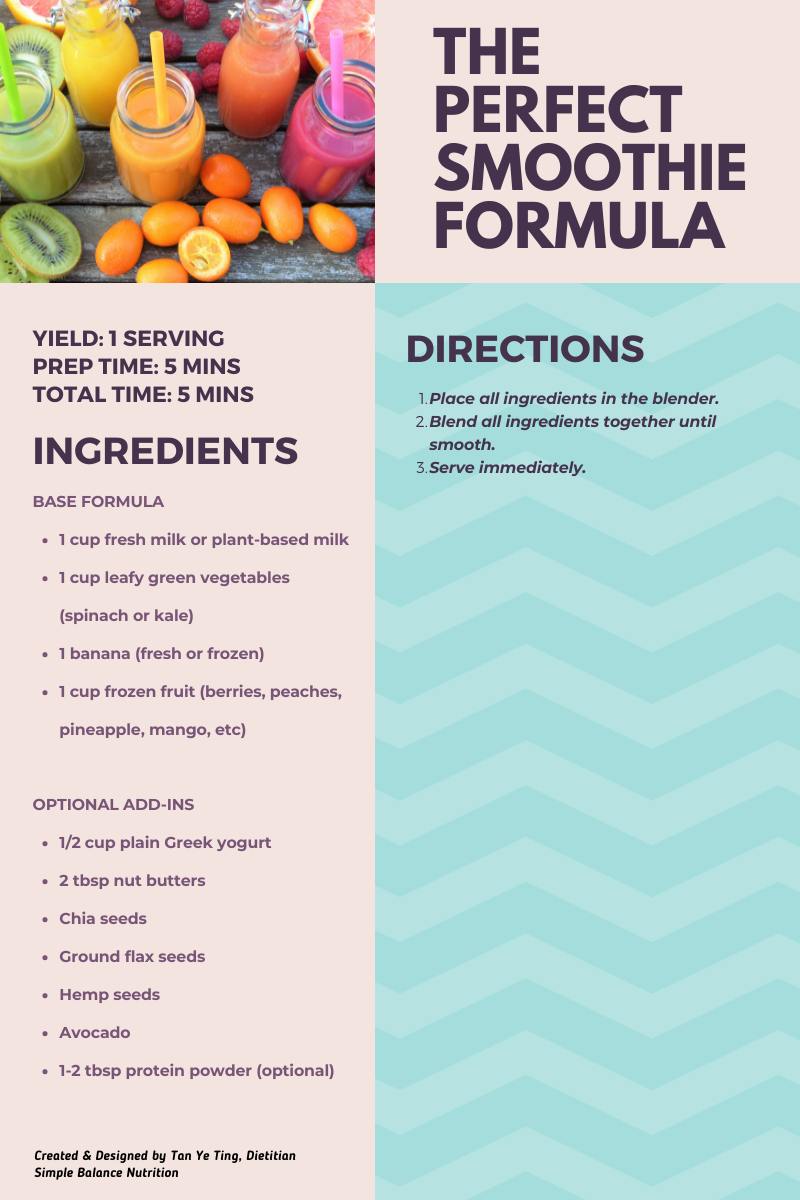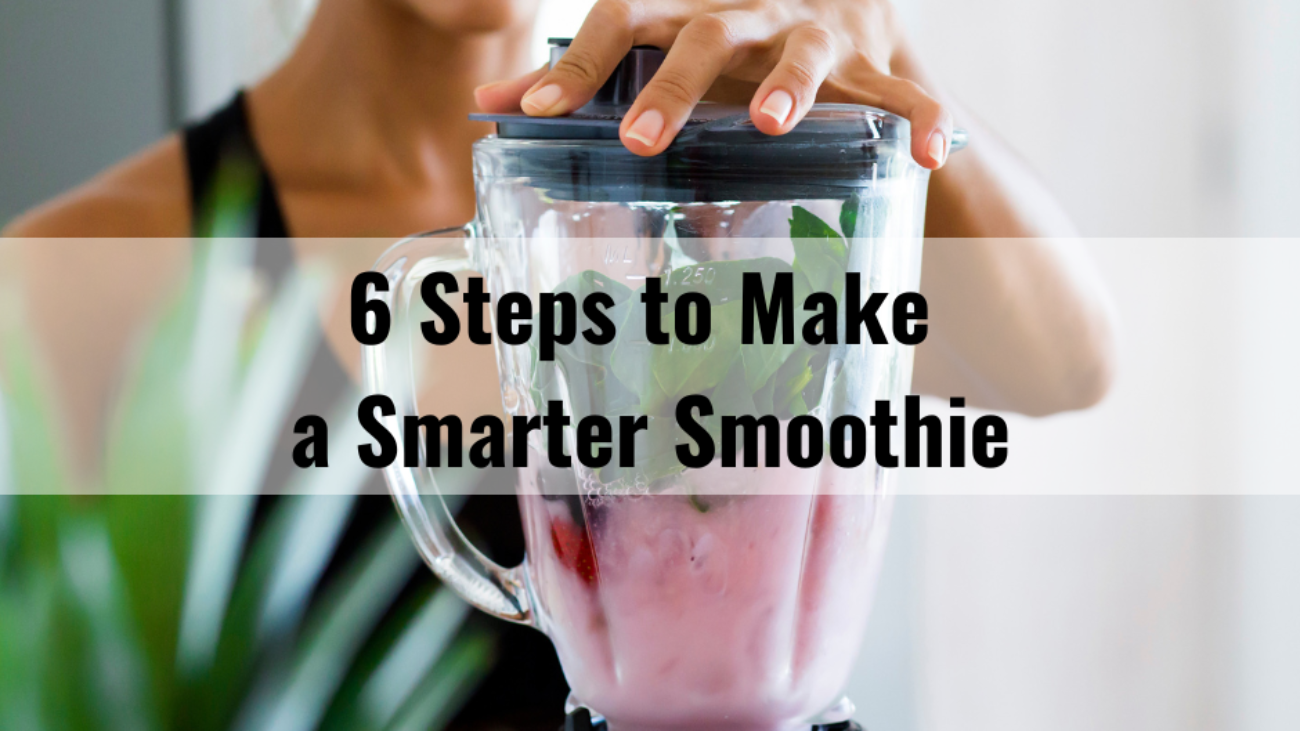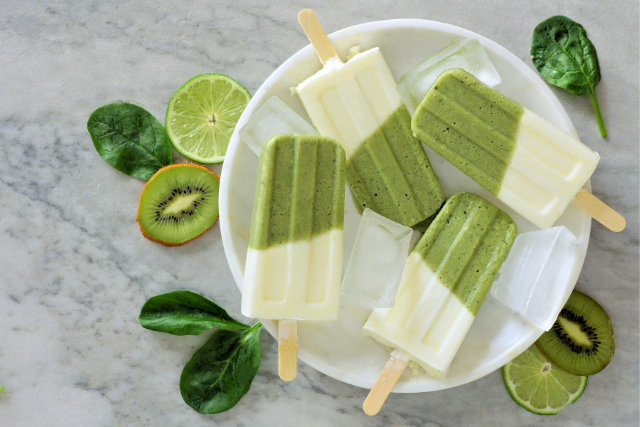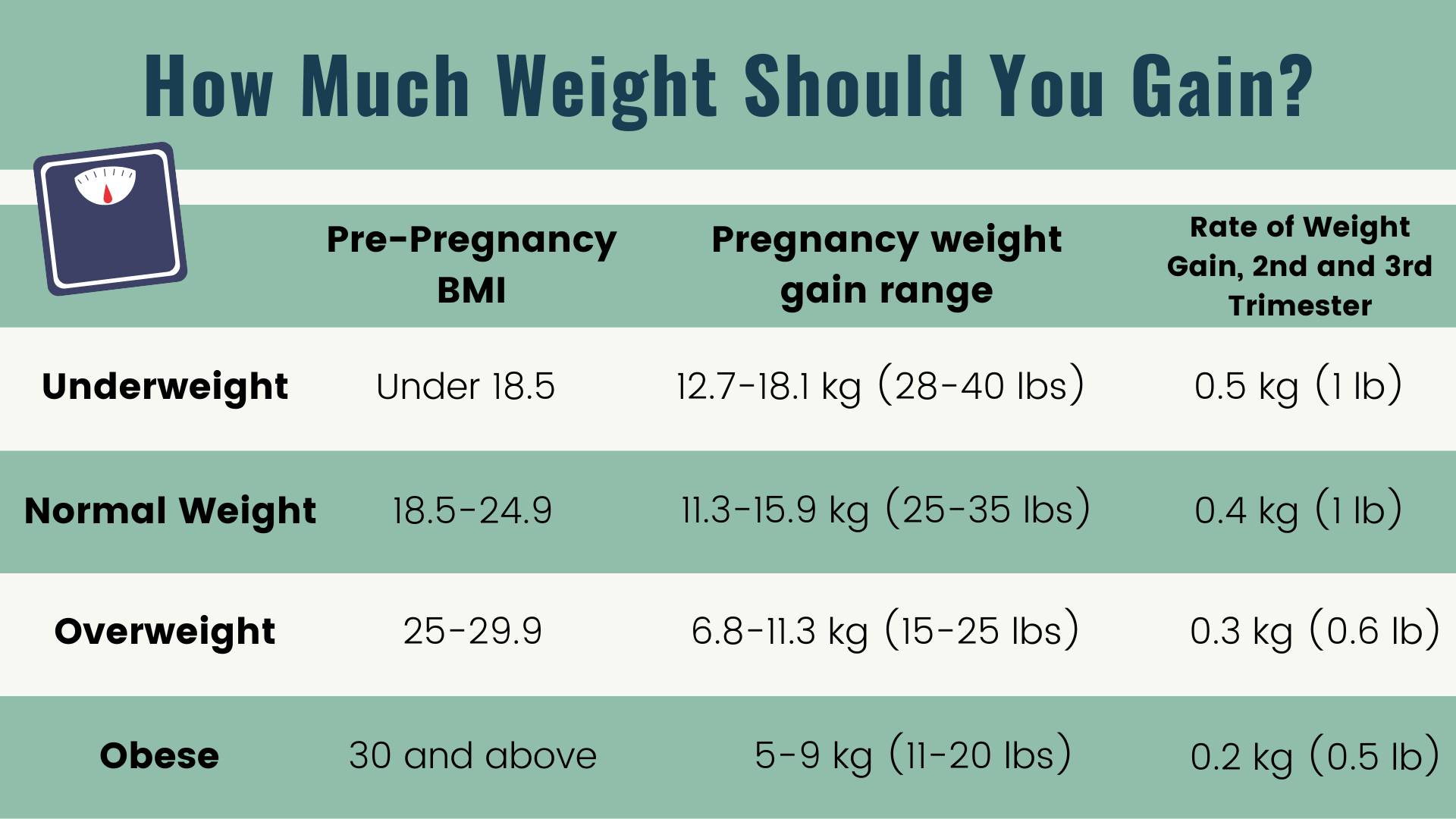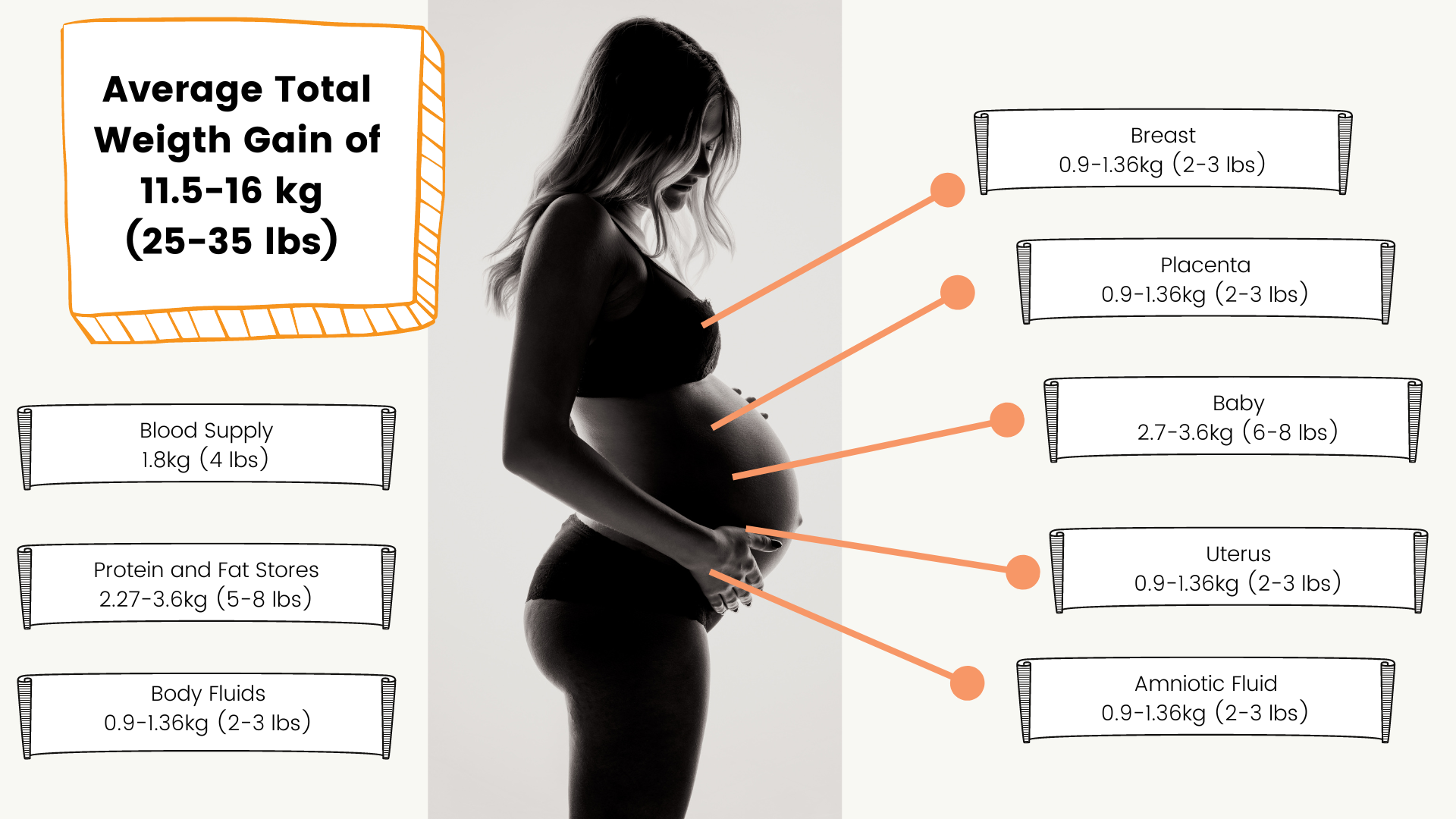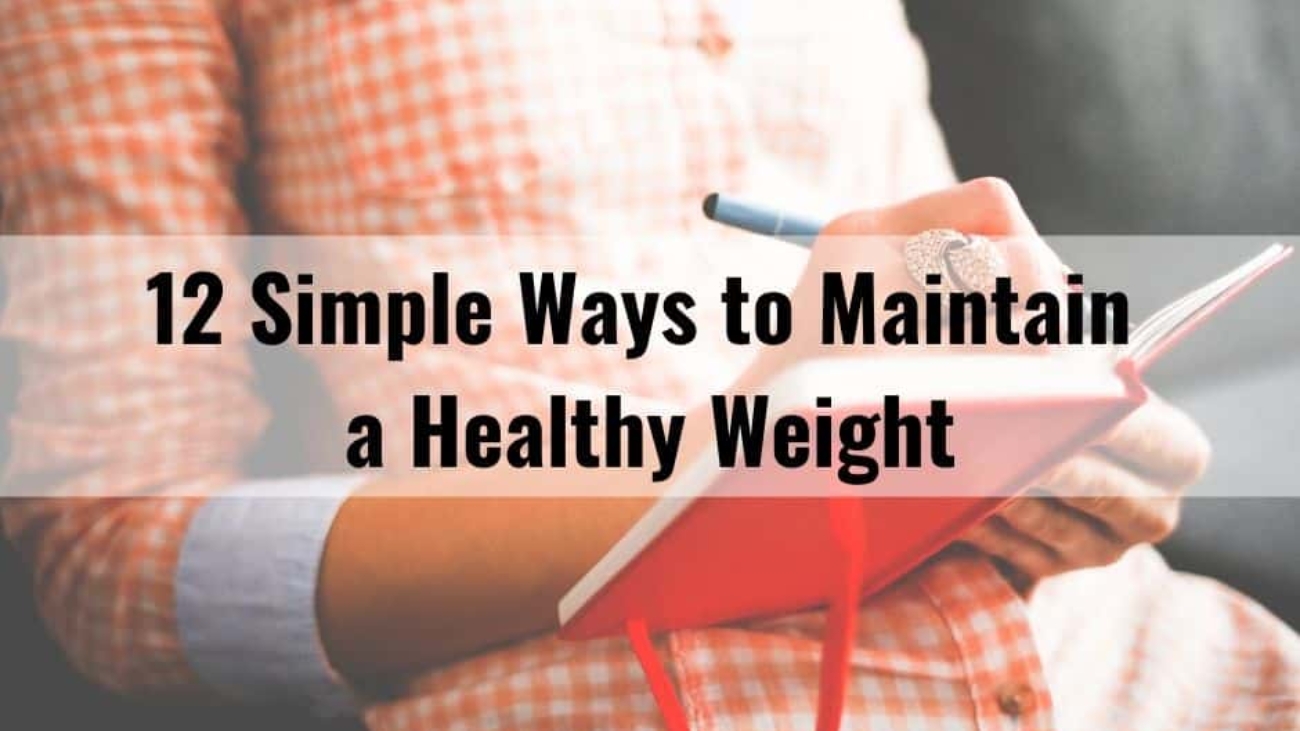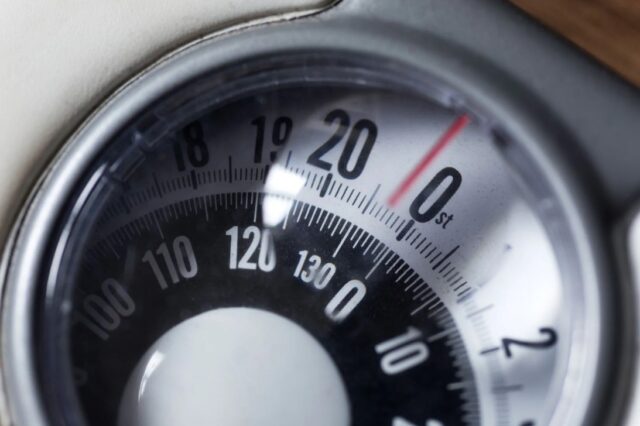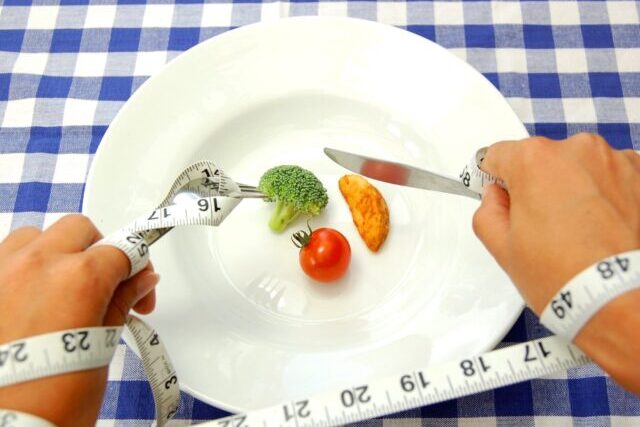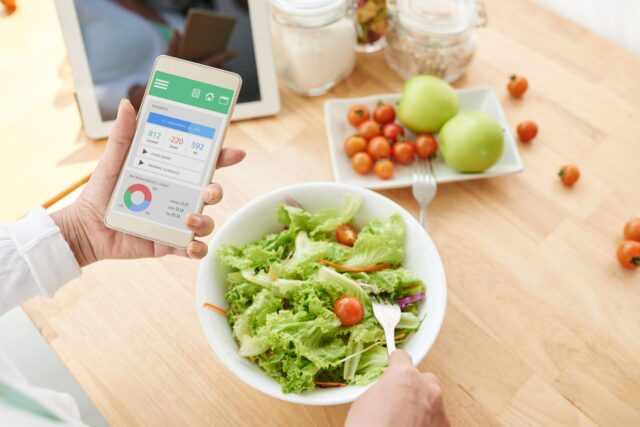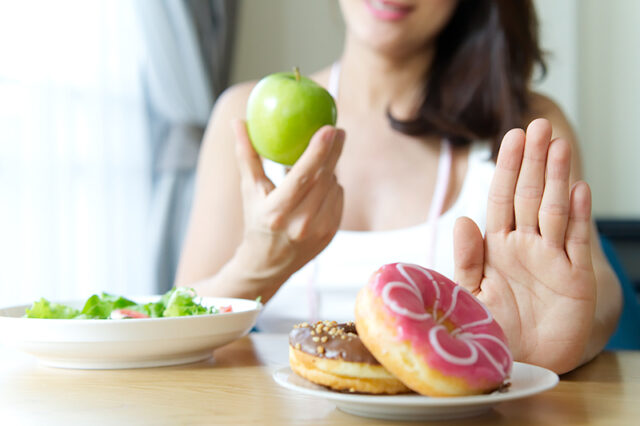A vitamin-packed smoothie is a great way to start the day, or works as the perfect afternoon snack. As a dietitian, I know the secrets to a healthy and balanced smoothie. I am going to share some tips with you on how to make your smoothie or frozen treat high in Fibre + Protein + Delicious every time.
Smoothies are a GREAT way for you and your children to get the vitamins and minerals in.
STEP 1: LIQUID FIRST
Start your smoothie with 1/2 – 1 cup of liquid base. The more liquid you add, the more watery or runnier your smoothie will be. If you prefer a thicker consistency, use slightly less liquid.
I prefer adding milk which not only gives you liquid, but also Vitamin D and Magnesium (important nutrients for bone health). It is important to add the liquid to your blender before adding the fruit as this will prevent the blade from getting damaged.
- Cow milk, Kefir
- Soy milk, almond milk, coconut milk, cashew milk, goat milk, oat milk
- Coconut water
- Fruit juice
- Green tea
- Coffee
Tips: You can consider to create flavoured ice cubes using coconut water, green tea, or coffee. Simply pour your liquid of choice into ice cube trays and freeze until solid. Using a flexible silicone tray with a lid, which helps prevent unwanted freezer scents and odors from being absorbed into the ice cubes.
STEP 2: FREEZE YOUR FRUIT
If you want to make smoothie regularly, it is a great idea to stash some fruit in the freezer. Not only will they retain their nutritional value and flavour, they will instantly chill your smoothie, so you do not have to add ice.
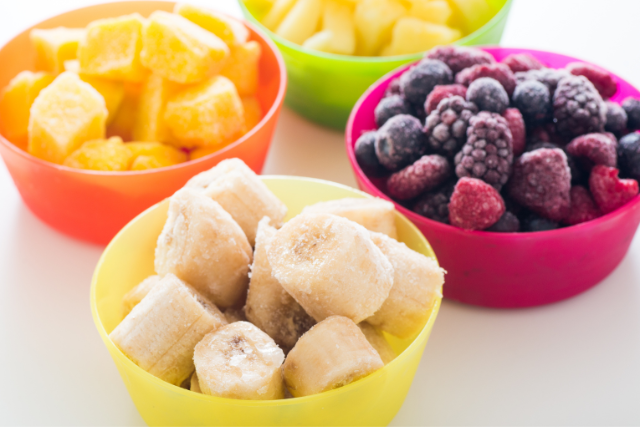
Most grocery stores now sell frozen fruits or smoothie packs, which are often great value and give you a good mixture of fruit.
- Berries: Strawberries, blueberries, raspberries. When it comes to berries, frozen ones are great year-round. When in season, fresh is fabulous.
- Bananas, apples, oranges, melon, kiwifruit. All are easily available and flavorful, either on their own or in combination with other things.
- Pineapple, papaya, or mango can add a fun and flavorful tropical twist.
Tips: Before your bananas turning “brown” in the fruit bowl, peel and slice them, then freeze on a sheet of baking tray until solid. You can then store in Ziplock bag and throw into your blender whenever you need them.
STEP 3: ADD THE GREEN
If you haven’t tried a smoothie made from a mixture of fruit and vegetables before, you may be surprised by the flavour. The sweetness of fruit blends well with lots of vegetables and makes for a delicious and super-nutritious drink. If you’re not used to adding them, start slow with a smaller portion, and work your way up. A handful of green, such as spinach or kale. You can also experiment with what you’ve got. Sweet peppers, beets, carrots, or cucumbers pack a nutritious and flavourful punch.
- Greens: kale, spinach.
- Beets: Beets are naturally sweet, but raw ones have a stronger taste. Cooked beets are so mild and sweet, you can easily add a scoop to your smoothie. If you don’t mind the stronger flavor of raw beets, grate them directly into the smoothie before blending.
- Sweet potato or pumpkin.
Tips: Chop the “hard” vegetables into smaller pieces before throwing them into your blender if you don’t have a high-powered blender.
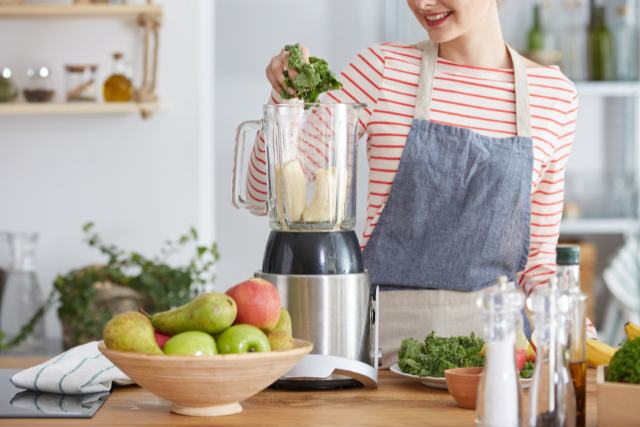
STEP 4: PROTEIN BOOST
Adding protein to your smoothie gives it staying power, meaning that you’re satisfied long after you’re done drinking. My favourite protein source is Greek Yogurt, which adds calcium. Other sources can be natural peanut butter or almond butter, which adds vitamins and fibre.
If you’re having a smoothie for breakfast or lunch, or after workout, make it a more balanced meal by adding some protein. A spoonful of peanut or nut butter, or some tofu will blend well with your smoothie and give you an essential protein boost.
- Silken tofu
- Plain Greek yogurt
- Cottage cheese
- Nuts (use either a handful of chopped nuts): Almond, pistachios, cashew, brazil nuts, pecans, pine nuts, chestnuts, macadamia nuts, peanuts, walnuts
- Nut butter: Almond, peanut, walnut, cashew, hazelnut, pistachio, sunflower seeds
- Seeds: Sesame, pumpkin, sunflower
- Flax seeds (ground), chia seeds, hemp seeds
- Cooked beans (plain, unflavored): Mung beans, white navy beans, chickpeas
STEP 5: HEALTHY FATS
Fats help your body absorb the critical nutrients that you’re packing into your smoothie, such as vitamin A, D, E and K. Using half an avocado or adding a couple of tablespoons of ground flax seed, hemp seeds or chia seeds will give you enough healthy fat to feel full.
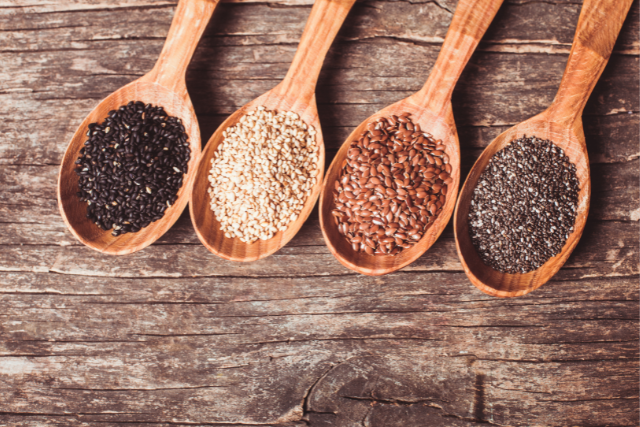
STEP 6: INFUSE WITH FLAVOUR
Herbs, spices, and flavour extracts lend an interesting taste and help you avoid extra added sugar. Try mint or basil to make it cool and refreshing; cayenne and chili pepper for added heat. A squeeze of lemon or lime helps enhance other flavors in the smoothie. A few drops of almond or vanilla extract, cocoa powder, shredded coconut, or cinnamon and nutmeg make a smoothie more dessertlike.
Mint is great with fruits such as cantaloupe.
MONEY & TIME SAVING TIPS
- Pre-blend your smoothie ingredients, then pour into muffin tins and freeze. Once frozen, pop the “smoothie muffins” into a Ziplock bag and keep in the freezer until ready to use. To make a quick smoothie, just pop a couple of “smoothie muffins” and some milk, and ice in the blender and blend !!
- Instead of making the pre-blend smoothie, I usually turn it into frozen treat – Smoothie popsicle.
WHAT NATURAL SWEETENERS DO YOU RECOMMEND?
It is unnecessary to add any “sugars” in your smoothie. If you are looking for healthier sweetener, I would go with dates or prunes. Dried fruits help sweeten the smoothie, eliminating the need for more sweeteners. Plus, you get an extra helping of fiber!
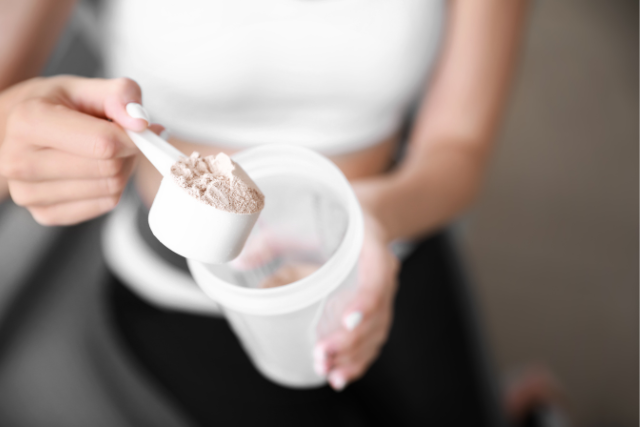
WHAT ABOUT PROTEIN SHAKE OR PROTEIN POWDER?
I personally do not add protein powder to my smoothies because it isn’t really necessary (for a healthy individual). We already consume too much protein in a daily basis. The belief that we need to consume additional protein in the form of an ultra processed powder is absolutely ridiculous. Furthermore, these powders are often contaminated with potentially harmful substances including heavy metals – arsenic, lead, mercury, cadmium. Why use ultra-processed protein powder when you can add real whole food?
Protein powder can be higher in sugar. They are also often pricier.
Stop spending money and waiting in line for a smoothie. By following these simple guidelines, you’ll be able to control your own ingredients to make a flavourful and healthy smoothie in your own kitchen.
BOTTOM LINE
Once you’ve mastered the basic, try adding different flavours to your basic recipe. Add a spoonful of cocoa powder, cinnamon, grated nutmeg or vanilla extract before blending, or sprinkle of flax seeds (ground), toasted chopped nuts, rolled oat or wheat germs. Not only will it taste great but it will keep you fuller for longer too.
